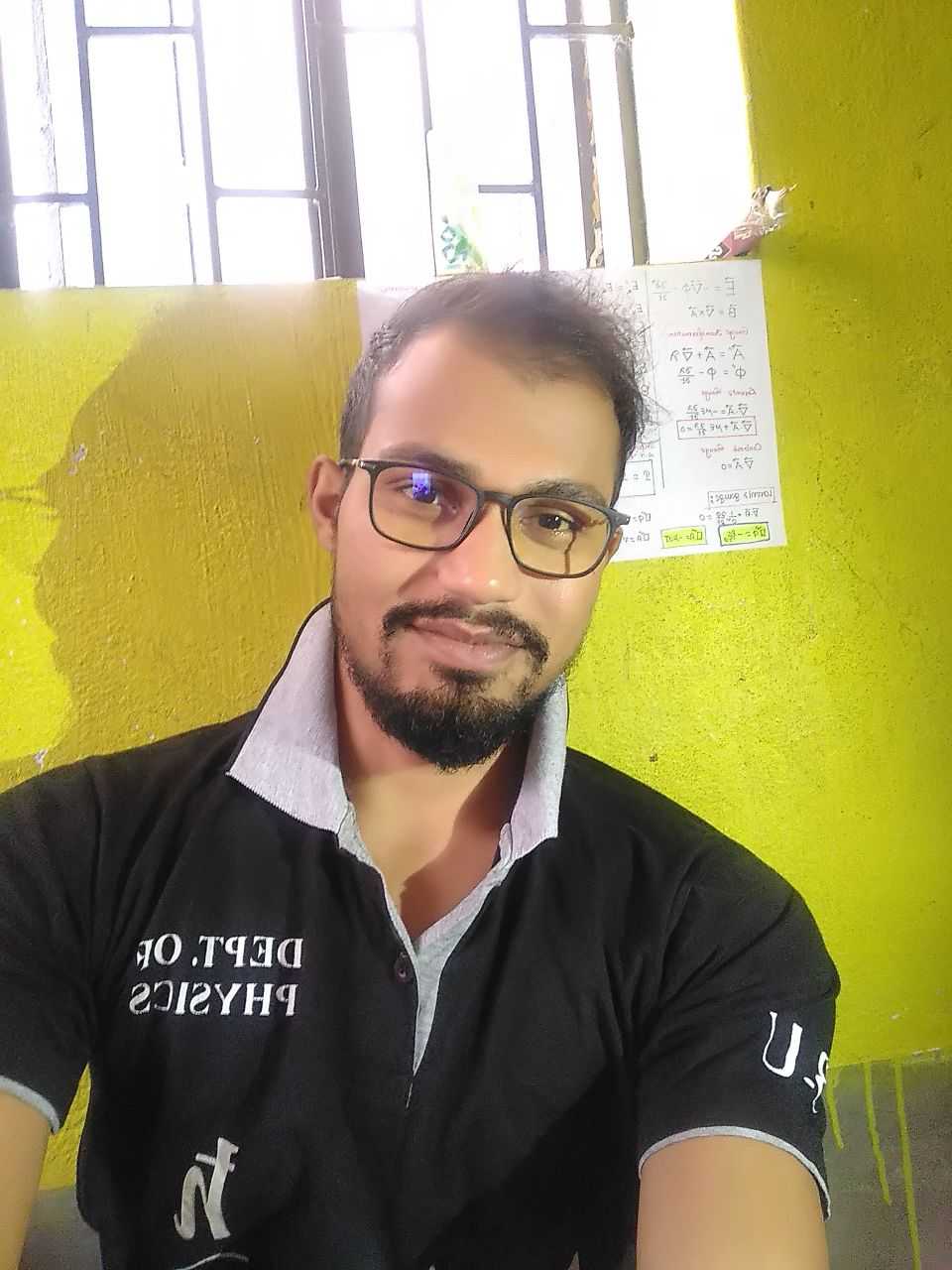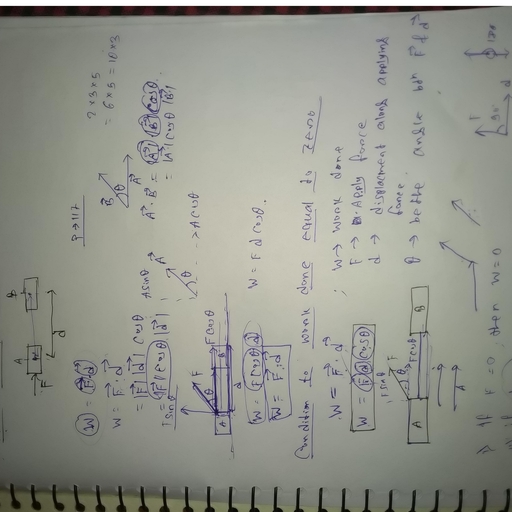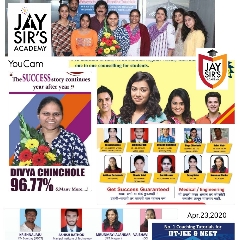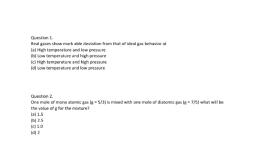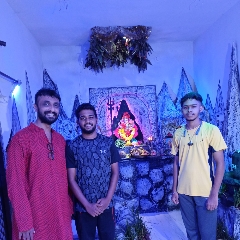Question 1 :
An ideal gas has an initial volume $V$ and pressure $P$. In doubling its volume the minimum work done will be in (of the given processes):
Question 2 :
The amount of heat required to heat 1 mol of a monoatomic gas from 200$^o$C to 250$^o$C will be ............. if the heat required to heat the diatomic gas from 200$^o$C to 300$^o$C is Q.
Question 3 :
The perfect gas equation for 4 gram of hydrogen gas is :
Question 4 :
In the gas equation PV = RT, V represents the volume of :
Question 5 :
The gases are at absolute temperature $300^oK$ and $350^oK$ respectively. The ratio of average kinetic energy of their molecules is
Question 6 :
An ideal gas is enclosed in a sealed container. Upon heating, which property of the gas does not change?
Question 7 :
Which of the following gives evidence to kinetic theory of gases?
Question 8 :
Which term describes the mass of $6.022\times { 10 }^{ 23 }$ representative particles?
Question 9 :
At what temperature does the average transnational kinetic energy of a molecule in a gas become equal to kinetic energy of an electron accelerated from rest through a potential difference of $1$ volt? ($k=1.38 \times 10^{-23}J/K)$
Question 10 :
If for a gas $\dfrac{R}{C_{v}}=0.67$, then the gas is made up of molecules which are :<br/>
Question 11 :
State whether true or false:<div>Linear molecules have $3N-5$ vibrational degrees of freedom, whereas non linear molecules have $3N-6$ vibrational degrees of freedom, where N is no. of atoms present in a molecule.</div>
Question 12 :
The correct relation connecting the universal gas constant (R), Avogadro number N$_A$ and Boltzmann constant (K) is :
Question 13 :
The internal energy of a diatomic gas us given as $U=U_0V$, where $U_0$ is a constant . Molar heat capacity of gas is
Question 14 :
Total number of degrees of freedom of a rigid diatomic molecule is
Question 15 :
If the pressure of a gas is increased then its mean free path becomes :
Question 16 :
A gas has a molecular diameter of 0.1 m. It also has a mean free path of 2.25 m. What is its density?<br>
Question 18 :
The adiabatic and isothermal volume elasticities B$_{\phi}$ and B$_{\theta}$ are related as :
Question 19 :
The mean free path of a gas varies with absolute temperature as :
Question 21 :
If the pressure acting on an ideal gas that is kept at constant temperature is multiplied by four, its volume
Question 22 :
What happens to the density of the gas if the volume of an ideal gas is reduced to half its original volume:
Question 23 :
<span class="wysiwyg-font-size-small"><span class="wysiwyg-font-size-small"></span></span><p class="wysiwyg-text-align-left">The parameter that determine the physical state of gas are :<br/></p><p class="wysiwyg-text-align-left">a) Pressure b) Volume</p><p>c) Number of moles d) Temperature</p>
Question 24 :
According to the Boltzmann's law of equipartition of energy, the energy per degree of freedom and at a temperature T K is :
Question 25 :
All gases have the same number of moles in the same volume at constant temperature and pressure.<br/>
Question 26 :
An ideal gas is kept inside a $4L$ container at a temperature of $300K$ and a pressure of $6$ atmospheres. The pressure is held constant while the volume of the gas is doubled. Find out the new temperature of the gas?<br/>
Question 27 :
Identify the correct statement about an ideal gas contained at a fixed volume when its temperature is increased on heating?
Question 28 :
If the pressure in a closed vessel is reduced by drawing out some gas, the mean-free path of molecules :
Question 30 :
At room temperature (27$^0$ C) the rms speed of the moleculesof certain diatomic gas is found to be 1920 ms$^{-1}$ then the molecule is:
Question 31 :
Calculate the means free path of nitrogen molecule at $27^o$C when pressure is $1.0$ atm. Given, diameter of nitrogen molecule $=1.5\overset{o}{A}$, $k_B=1.38\times 10^{-23}$J $K^{-1}$. If the average speed of nitrogen molecule is $675$ $ms^{-1}$. The time taken by the molecule between two successive collisions is?
Question 33 :
The number of vibrational degrees of freedom for a $CO_2$ molecule is
Question 34 :
Find the amount of work done to increase the temperature of one mole of an ideal gas by $30^oC$ if it is expanding under the condition $V_\alpha T^{2/3}$.
Question 35 :
The temperature of an ideal gas is increased from 27$^o$C to 927$^o$C. Then, the mean kinetic energy of gas molecules :
Question 36 :
<p>7 moles of a tetra-atomic, non-linear gas $A$ at $10\: atm$ and temperature $'T'$ is mixed with 6 moles of another gas $B$ at $(T/3) $ and $5\: atm$ in a closed, rigid vessel without allowing any energy transfer with surroundings. If final temperature of the mixture was $(5T/6)$, then find the atomicity of $B$. </p><p>(Assuming all modes of energy. are active)</p>
Question 37 :
Assertion: Mean free path of a gas molecules varies inversely as density of the gas.
Reason: Mean free path varies inversely as pressure of the gas.
Question 38 :
A flask contains argon and chlorine in the ratio of $2:1$ by mass. The temperature of the mixture is $27^0C$<span>. The ratio of average kinetic energies of two gases per molecule is<br/></span>
Question 39 :
The energy density U / V of an ideal monoatomic gas is related to its pressure P as
Question 40 :
For a given gas the mean free path at a particular pressure is<br>
Question 41 :
During an experiment, an ideal gas is found to obey a condition $\displaystyle \frac{P^{2}}{\rho}\, =\, constant\, (\rho\, =\, density\, of\, the\, gas)$ The gas is initially at temperature T, pressurre P and density $\rho$. The gas expands such that density changes to $\rho/2$
Question 42 :
The equation of state for 5 g of oxygen at a pressure P and temperature T, when occupying a volume V, will be
Question 43 :
The equation of a certain gas can be written as $\dfrac {T^{7/5}}{P^{2/5}}=constant$. Its specific heat at constant volume will be :
Question 44 :
One mole of an ideal gas $ [{C}_{v,m} = \frac {5}{2}R ] $ at $300$ K and $5$ atm is expanded adiabatically to a final pressure of $2$ atm against a constant pressure of $2$ atm. The final temperature (in Kelvin) of the gas is:
Question 45 :
$5$ moles of an ideal gas at $100 \,K$ are allowed to undergo reversible compression till its temperature becomes $200 \,K$.<br/>If $C_v = 28 \,JK^{-1} mol^{-1}$, calculate $\Delta U$ and $\Delta PV$ for this process. $(R = 8.0 \,JK^{-1} mol^{-1})$
